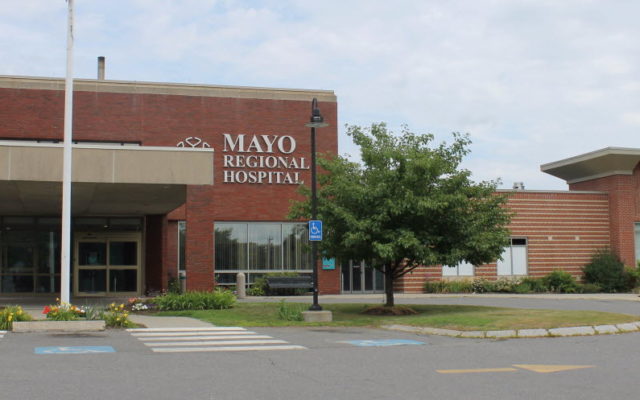
Maine hospitals are swamped with patients who avoided them during pandemic peak
By Kathleen O’Brien, Bangor Daily News Staff
The National Guard members brought in as reinforcements while Maine hospitals buckled under a surge in COVID-19 cases and staff absences have departed, and the number of hospitalized COVID-19 patients statewide is at less than a quarter of its mid-January peak.
But Maine hospitals say they’re still swamped with patients. This time, however, they’re patients who stayed away from hospitals while they were overwhelmed with COVID-19 cases or had procedures delayed because hospitals couldn’t accommodate them during the latest virus surge.
And now that they’re seeking delayed care, whether regular check-ups and disease screenings or treatments for chronic illnesses, clinicians are finding they’re sicker than they would have been if they had received care earlier.
“Either they’re having cancers that were picked up at a later stage than they would have had we been doing good preventative care rather than delaying care, or they have chronic health conditions that worsened for the same reason,” said Dr. James Jarvis, clinical education director and clinical lead physician for incident command for Brewer-based Northern Light Health, the parent organization for 10 hospitals including Northern LightEastern Maine Medical Center in Bangor.
The surge of non-coronavirus patients at Maine hospitals following the omicron-driven virus wave that resulted in the most COVID-19 hospitalizations to date is the latest in a pattern that has repeated itself throughout the pandemic. It could foreshadow what’s to come if Maine and the U.S. experience another virus surge driven by the more contagious BA.2 variant of omicron, which accounts for a majority of Maine’s new COVID cases.
Patients largely stayed away from hospitals and health care facilities after COVID-19 first reached Maine in March 2020, and hospitals canceled or delayed many surgeries and non-emergency procedures.
Nationwide, hospitals saw a 23 percent decline in emergency room visits for heart attacks and a 20 percent decline for strokes in the 10 weeks after COVID-19 was deemed a national emergency compared with the previous 10 weeks, according to the U.S. Centers for Disease Control and Prevention.
Patients then had limited time to return to their doctors before the more contagious delta variant arrived last fall, followed by the omicron variant this winter. With each virus wave, health care providers have seen the number of people seeking care for non-coronavirus reasons drop off before they see a surge once virus cases subside.
The state’s two largest hospital systems also canceled many non-emergency procedures in early December as the omicron-driven wave set in due to a lack of available beds and staffing shortages.
COVID-19 hospitalizations peaked on Jan. 13 at 436 statewide. On Friday, that number had fallen to 95.
Dr. SuAnne Hammon, primary care lead for Northern Light Primary Care, said at least 50 percent of her patients didn’t want to come in during the early months of the pandemic because they were afraid of contracting COVID-19. Now, about one in 10 patients remain hesitant to seek in-person care.
“We’re still seeing people delaying their own care because of the pandemic, then arguably because of that delay, coming in with a more advanced illness,” said Dr. Doug Sawyer, interim chief medical officer for the MaineHealth hospital network, which includes Maine Medical Center in Portland. “For example, a person came into the hospital after waiting two years to see a doctor and now needs open heart surgery. If they had been getting preventative care earlier in the illness, perhaps that wouldn’t be necessary.”
The surges reflect that Maine’s health care systems had limited flexibility to absorb the sudden spike in need.
“We had built systems of care that were at capacity,” Sawyer said. “We don’t compete for patients in Maine. We built the resources to the level of our communities’ health needs. Now those needs have gone up, but our capacity hasn’t.”
MaineHealth is working through a backlog of 2,000 patients who have been waiting for a procedure due to the pandemic, according to Sawyer.
Meanwhile, health care facilities are balancing the backlog of patients with staffing shortages.
“At MaineHealth on any given day, there are over 2,000 open positions,” Sawyer said. “We have been hiring as fast as we can, but we have more nurses leaving for a variety of reasons than we’re able to hire.”
Hospitals in Maine and across the country increasingly turned to traveling nurses as a stopgap measure as their staffing needs intensified. MaineHealth still has more traveling nurses than it did before the pandemic, though the number has come down since earlier in the pandemic, said Sawyer, who declined to say how many traveling nurses are working in the hospital system.
While health care facilities state and nationwide are inundated with patients seeking the care they missed because of the pandemic, providers are still encouraging patients to return to their doctors to receive regular treatments and preventive screenings.